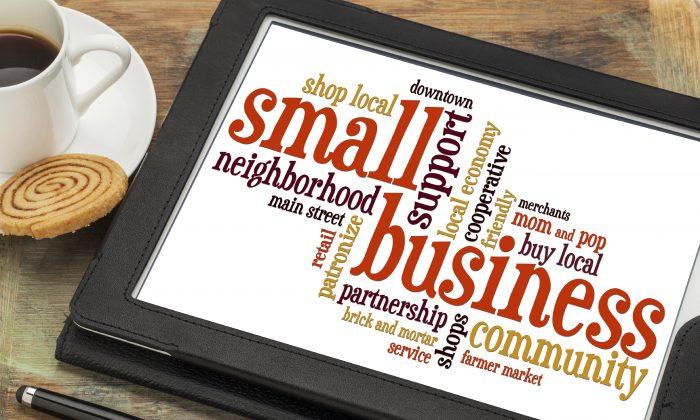U.S. small-businesses owners are deeply pessimistic about economy, as inflation, higher borrowing rates, and a tight labor market weighed on their outlook last month.
This marks the fifteenth consecutive month below the 49-year average of 98.
“Small-business owners are cynical about future economic conditions,” said NFIB chief economist Bill Dunkelberg in the report.
Loans Becoming Difficult to Get From Banks
Economists warned that the collapse of both Silicon Valley Bank and Signature Bank, which roiled the financial system, would cause lending standards to become more heavily restricted.“Rates are rising, but credit is still available,” said the report, but increasing numbers of small businesses found it more difficult to obtain a loan or credit line after the bank failures in early March.
“There are major uncertainties ahead, [and the] most immediate is concern that a banking crisis could develop,” said Dunkelberg.
At least 9 percent of small-business owners reported that loans were harder to get than compared to the previous three months, the most since December 2012, according to the survey, while another 9 percent expected credit to contract further in the coming months.
Banks tend to significantly raise their lending standards during a credit crunch, making it difficult for businesses or households to acquire loans.
About 26 percent of small-business owners who had recently taken out loans reported paying higher borrowing rates, the most since 2006, according to the NFIB survey.
This was partially caused by the Federal Reserve’s aggressive move to raise interest rates in its attempt to combat high inflation.However, banks were already tightening lending standards before the banking crisis began.
“Lending growth was slowing long before SVB failed, but the declines in the March NFIB measures of current and expected credit availability means we have to expect much weaker lending numbers over the next few months,” said Ian Shepherdson, chief economist at Pantheon Macroeconomics.
Small-Business Investments Slow Due to Sluggish Economy
The percentage of businesses planning new investments fell to its lowest level since March 2021, with only 20 percent expecting to make capital expenditures over the next three to six months,Small businesses are particularly vulnerable to tighter credit conditions because they are particularly dependent on regional banks, which were affected by the recent crisis.
“Small businesses are captives of their banks, and the overnight change in the way markets view regional banks means they have been catapulted into survival and liquidity mode, said Shepherdson.
Despite tighter credit conditions, 24 percent of small-business owners still said that inflation was the most important issue, followed by labor shortages, with 43 percent having difficulty filling job openings.
Price pressures appear to be easing, with only 37 percent of owners reported raising their selling prices in March, the lowest level since April 2021.The amount of owners planning to raise prices over the next three months rose to 26 percent last month, down from 52 percent a year ago.
Meanwhile, only 18 percent of firms reported lower earnings in March compared to the year before, an improvement from 23 percent in February.
Labor Shortage Remains a Problem
About 59 percent of respondents said they were hiring or trying to hire in March, according to the NFIB monthly jobs report.Only a net 15 percent of owners said they were planning to add new jobs in the next quarter, while 26 percent reported finding few qualified applicants to fill open positions.
The latest federal hiring data from last week showed that the labor market continued to add jobs at a strong pace, with employers added 236,000 jobs in March, while unemployment remained low at 3.5 percent.
Employers have also raised compensation to attract or retain workers, but elevated labor costs have become a burden, with 11 percent of businesses reporting their concern.
The NFIB did find some additional troubling economic indicators in the small-business report.
“A net negative 6 percent of all owners (seasonally adjusted) reported higher nominal sales in the past three months. Sales are trending down,” the survey said.
“The net percent of owners expecting higher real sales volumes deteriorated six points to a net negative 15 percent.”
Only 2 percent of small-business owners believed that the next three months would be a good time to expand, the lowest reading since March 2009, during the Great Recession.
“The March survey ought to capture at least some of the impact of the banking crisis on small-business owners’ confidence, and it’s not pretty; the decline in the headline index reverses the modest gain since the start of the year,” Shepherdson wrote.





